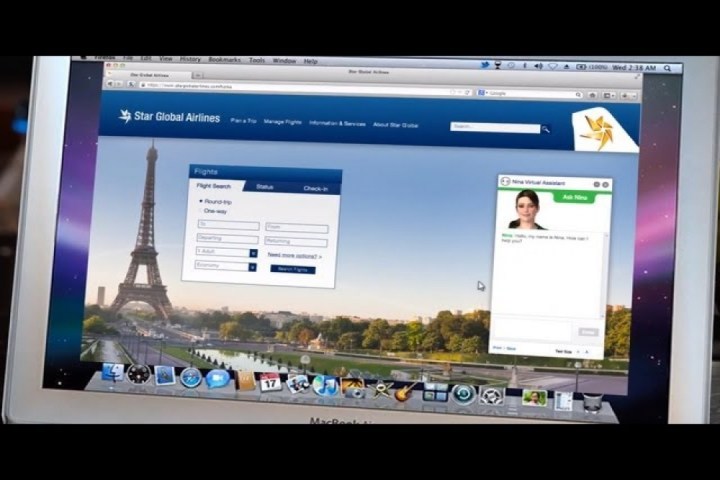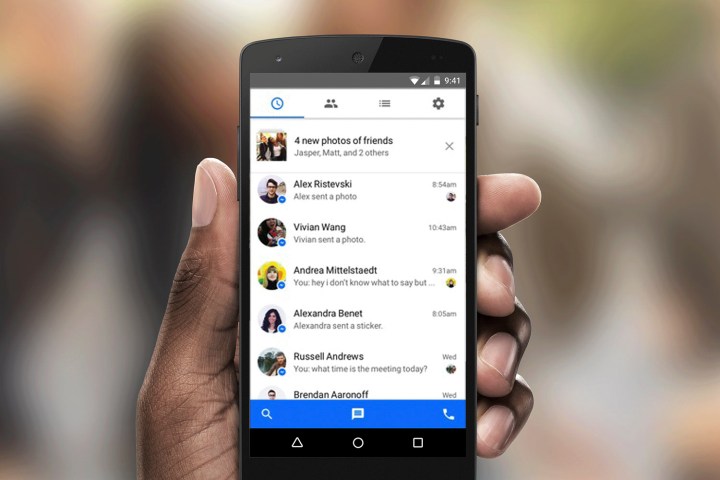
On Thursday, Nuance launched a new version of Nina, its AI-powered, cross-platform assistant melding of machine smarts and human intelligence. From a customer perspective, it is just like any other AI-powered voice assistant — Nina can respond to questions (think the status of a pizza order, for example) and walk you through a conscripted list of choices. But unlike Apple’s Siri, Amazon’s Alexa, and Microsoft’s Cortana, Nina is sharp enough to know when it can’t answer a question — and to throw it to a human specialist who can.
“The advantage of AI is, they’re always available,” Robert Weiderman, Nuance’s executive vice president and general manager, told Digital Trends. “Unlike a human, they never have a bad night — you can self-service 24/7.”

Here’s how it works: Nuance’s data engineers use Nina Coach, an automated learning tool, to train it on a business’ ins and outs. Once it has gotten a handle on the basics, it goes to work, fielding between 80 to 90 percent of customer calls, SMS messages, and texts from chat platforms like Facebook Messenger.
“General-purpose assistants like Alexa and Siri know a little about a lot,” Weiderman said. “Nina can go deep.”
When Nina is unsure about a question, it will consult help — human help. In those rare cases, Nuance’s AI tries to match customers to reps with relevant expertise. Then, it provides those reps with a transcript and history of the conversation, and a list of likely answers in order of confidence. The call center staffer’s choice is recorded, analyzed, and folded back into what Weiderman calls the “semantic brain” — Nina’s collective intelligence.
“It’s just like people,” Weiderman said. “Kids learn to have conversations, go to high school and college, get a doctorate, and become an expert in something. Nina’s the same way — it has a learning loop will eventually create 100 percent confident answers.”

Weiderman sees it as a way to free up hands in customer support centers, and to help businesses prioritize the most important — and difficult — requests without impacting other customers’ experience. With Nuance’s infrastructure up and running, call center agents can service three to six customers at a time, Weiderman said.
“You can turn on support for messaging, but you can’t control the volume that’s going to come at you,” he said. “The days when company’s could control how consumers spoke with them is going away. First the web came along, and you could call or go to the website. And now there’s chat apps like Facebook Messenger, Line, and Kik, and Internet of Things devices like Amazon’s Echo.”
“Nina’s able to support a growing number of channels, including voice, mobile and Internet of Things devices like Alexa,” he said.
Human-augmented intelligence is just the tip of Nina’s iceberg. Nuance also announced asynchronous messaging, which lets customers start a conversation with a business’s assistant on one platform and pick it up later, on another. You can text a credit card company about an erroneous charge via Facebook Messenger, for example, and get status updates via SMS every hour until the problem is resolved.
Nina’s also gaining the ability to transition customers to digital channels. If you call a company’s support center and Nuance’s automated system can’t find the answer to your question, you’ll get two options: Wait for a human agent, or continue the conversation on a digital channel like Facebook Messenger.
“We don’t expect text message conversations to be instantaneous,” Weiderman said. “And when you’re dealing with something like an insurance claim, it can take days of back and forth to get the paperwork in order.”
Nuance rolled out the new Nina features to ICBC Bank, one of the largest in China, in 2012. More than a billion users interact with its support via messaging app WeChat, Weiderman said, accounting for 85 percent of all customer service requests.
“We’re adding cognitive, data-driven machine learning to our products,” Weiderman said. “We’re the only vendor combining the tooling, intelligence, and analytics of natural language processing and cognitive technologies […] to deliver automated and assisted solutions targeted to enterprise needs.



